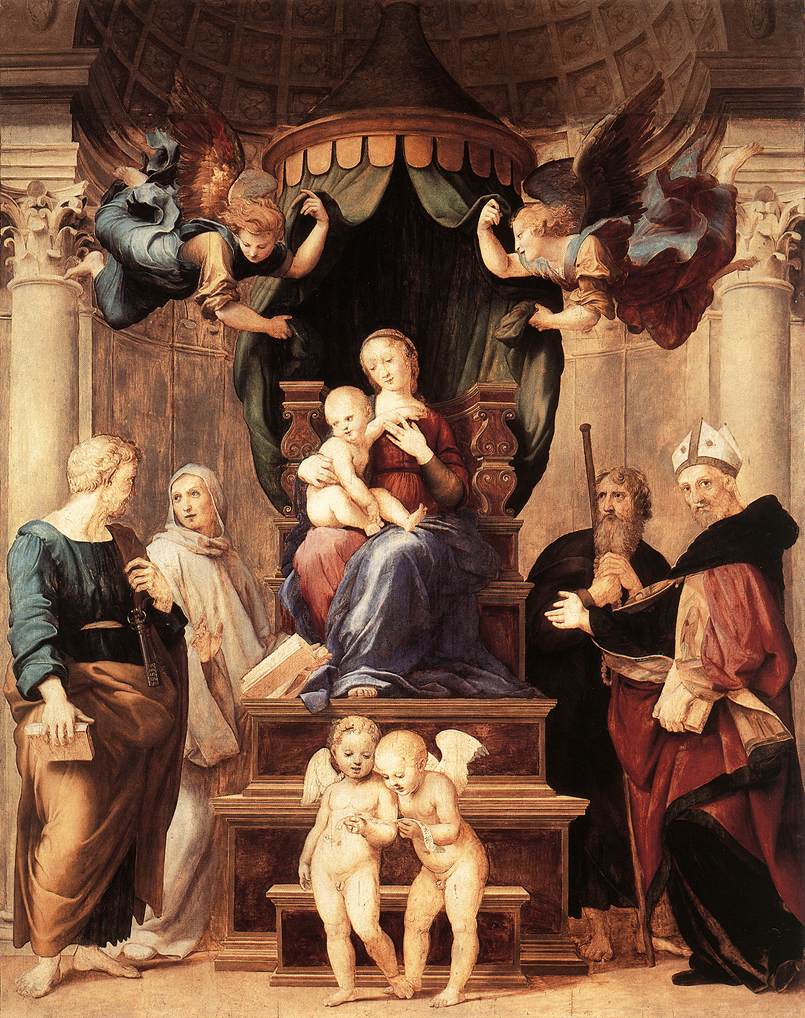Madonna of the Baldacchino
Story
The stylistic versatility which Raphael demonstrates in contemporary or nearly contemporary works executed for a homogeneous social environment is indicative of his extraordinary technical capacity. This versatility is expressed in a variety of compositional types, which can range from simple forms to more monumental and complex ones; and in conceptual expressions, which are sometimes calm and quiet and sometimes emphatic.
This range of figurative expressions appears in the Madonna del Baldacchino (Palazzo Pitti), a work from the Florentine period. This painting was begun in 1507 for the Dei family and was intended for their chapel in the Church of Santo Spirito. The panel's monumental structure derives partially from the Venetian tradition and partially from Fra Bartolomeo. The Venetian influence is visible above all in the setting: the apse of a church which recalls the larger compositions of Giovanni Bellini. The influence of Fra Bartolomeo consists mainly in the monumentality and poses of the figures. The semi-circular arrangement of the saints around the Virgin and the unusually excited flying angels who hold open the curtain of the baldachin give the painting a sense of free atmospheric circulation. The figures, all posed differently, prepare a complex of expressions which will find its natural outlet in the large descriptive compositions of the Vatican.
When Raphael went from Florence to Rome in 1508, this picture remained behind unfinished. The Virgin is enthroned beneath a baldacchino. St. Peter and St. Bernard are on the left, while St. Augustine, and probably St. James the Elder, stand on the right. The restoration carried out in 1991 proved that all parts of the painting were by Raphael's hand, except the strip above the columns, which was added in 1697.
